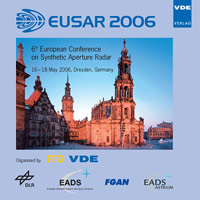Long and Short-memory spectral decomposition for dark regions analysis and discrimination in Sea SAR images
Konferenz: EUSAR 2006 - 6th European Conference on Synthetic Aperture Radar
16.05.2006 - 18.05.2006 in Dresden, Germany
Tagungsband: EUSAR 2006
Seiten: 4Sprache: EnglischTyp: PDF
Persönliche VDE-Mitglieder erhalten auf diesen Artikel 10% Rabatt
Autoren:
Bertacca, Massimo; Berizzi, Fabrizio; Mese, Enzo Dalle (Dept. of Information Engineering - University of Pisa, Via Caruso 14, 56122 Pisa, Italy)
Inhalt:
The aim of this paper is the definition of an analysis technique of SAR image spectra to discriminate between oil slicks (or spills) and low wind areas on the sea surface. Oil on sea surfaces dampens capillary waves, and reduces Bragg’s electromagnetic backscattering. A similar effect is produced by a low surface wind speed. In this case, the amplitudes of all the wave components are reduced and dark areas, analogous to those produced by oil spills or slicks, arise in sea SAR images. In the literature the discrimination between different sea surface anomalies (oil slicks, low wind areas, natural films, etc.) has been obtained employing isotropic and homogeneous stochastic spectral models to represent SAR image power spectra. In this paper we consider SAR images corresponding to windy sea areas (i.e. anisotropic sea SAR images) and containing dark regions produced by oil slicks and low wind areas on the sea surface. Power spectra, estimated for homogeneous SAR subimages, have been broken into two different components. The first spectral component is isotropic and takes into account for the long-range dependence (LRD) of sea SAR images. The second one is anisotropic and takes into account for the directionality of sea SAR images. Discrimination between oil slicks and low wind areas has been obtained comparing the shape of the anisotropic spectral components of dark area SAR images with those corresponding to SAR subimages of contiguous windy and clean sea areas. The proposed technique demonstrated reliable results when applied to European Remote Sensing 2 (ERS-2) SAR Precision Images (PRI) and to ERS-2 SAR Ellipsoid Geocoded Images (GEC).


